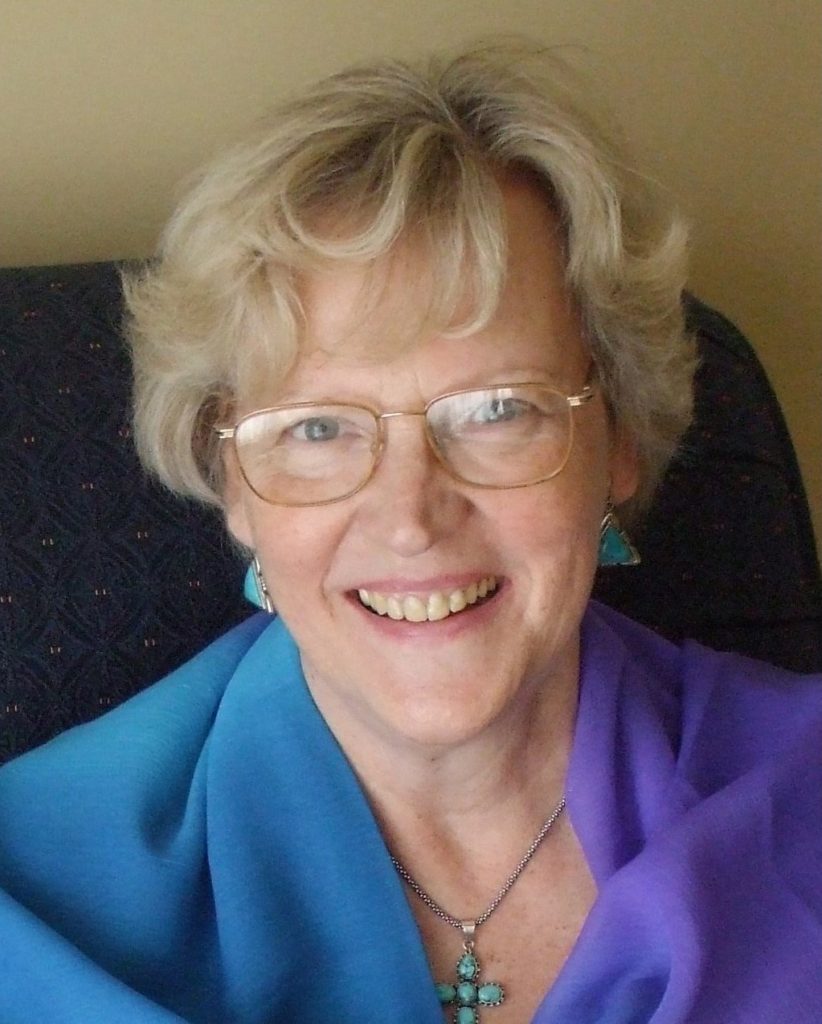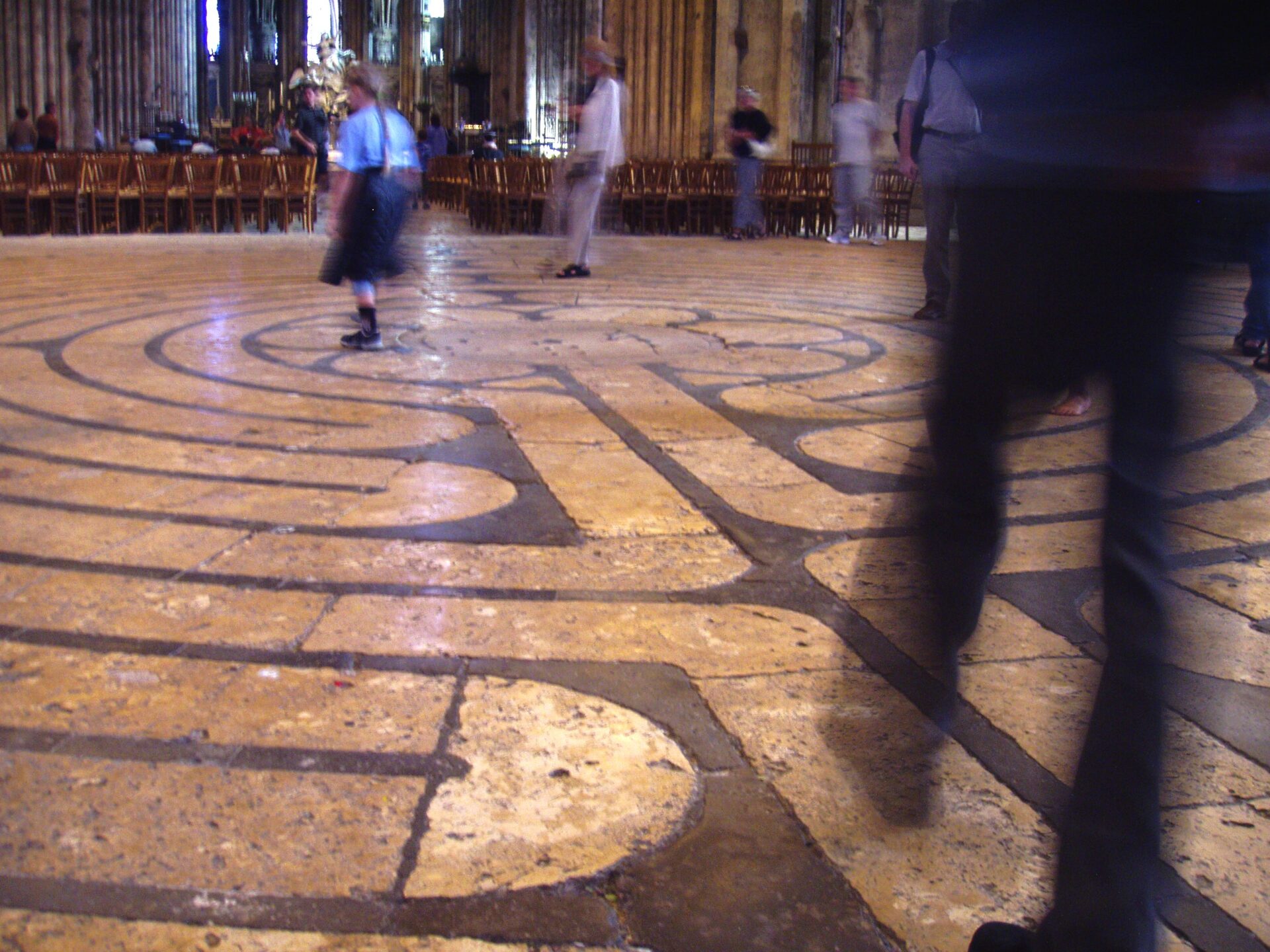In a neolithic burial mound built five thousand years ago in County Meath we can observe a decisive stage in the development of human consciousness. Just the reverential burying of human remains marks a breakthrough in self-awareness and self-respect. The mystery of life is somehow hidden and revealed in death. The bones, probably not those of the cooks or cleaners of the clan, were deposited in the dark heart of the quartz-covered construction. A few feet above the entrance to the complex a narrow aperture leads into a thin tunnel whose other end opens in the deep darkness of the core. Modern man touched the mind of his ancestors when archaeologists discovered the purpose if not the meaning of the aperture. At the winter solstice the first rays of the New Year’s sun, rising from its own death, touches the stone passageway and travels into the dark core, for several minutes dispelling the darkness with light.
Fortunate are those who crowd into the inner chamber each year hoping for a clear morning. The sensation of resurrection and enlightenment must be very strong and a sacred awe must unite them. It could however be a loose use of language to call it a mystical experience. Mystical experience can only be expressed in one or more of the protean forms of human language – like architecture, liturgy, art, philosophy, sexuality. But in itself mysticism is direct consciousness of what is immediately present and yet forever ineffable. We have no idea of the beliefs of those who so accurately calculated and calibrated the New Grange mound. But however they understood their own beliefs and even if they could not analyse them they were not copies of copies. They were born of direct experience.
Mystical experience is known by its fruits but is not itself subject to analysis. One cannot analyse the truly simple – but one can know it. Jesus who lived and spoke wholly from within this experience of ‘the Father’ said this of the ‘Reign of God’ which is the Christian term. ‘You cannot tell by observation when the reign of God will come.’ Given the slipperiness of all this it is not surprising that we readily opt for what seems like common sense and substitute the photograph for the real thing, the concept for the experience. Images and thoughts are objects that can be labelled and controlled whereas God, as St Irenaeus said, is a reality we can never know as an object but know only through participation in His own self-knowledge. After his intellectual marathon, as he sat in the great cathedral of his Summa, Thomas Aquinas had an experience one day as he celebrated mass that exploded his mental universe. Everything he had written, he said, was as straw and he was content to see it burned. In the scholasticism he engendered one rarely hears of this true summation of his labours or its relevance for us his students.
Augustine said that ‘if you can understand it it isn’t God’. This may seem to contradict many other things he said but in fact it reveals the fertile realm of paradox at the heart of the faith. Here is an archetype reflected in two complementary kinds of religious expression: the kataphatic that proceeds by saying true things about God and the apophatic that negates everything that can be said about God because God is beyond thought. Reason and faith are not contradictory but they are not the same. A balanced and mature Christian identity demands some competence in both. Every Christian today needs to be able to handle this paradox. This is what Karl Rahner meant when he said that the Christian of the future will be mystical or there won’t be any Christians.
The fruit of the ineffably mystical is the ordinarily contemplative. Life is changed not ended by the experience of God although it is a kind of death-separation as well as a conjugal-union. Contemplation is an easier term to deal with than mysticism because it covers not only a particular experience but a way of life enjoyed in the present moment. Joy is key to our understanding and living this. Aquinas thought of contemplation as the simple enjoyment of the truth. The contemplative life is the call of the gospel and the goal of any religion that has not insulated herself, as religions can, from the direct experience of God.
The renewal of religions periodically takes many forms – structural, symbolic, intellectual and liturgical. Christianity is passing through such a time of radical reform and of realignment to a modern culture whose primary characteristic is continuous change. In traditional societies, such as those based on agricultural cycles, life repeats itself and that suits a certain kind of institutional religion that celebrates harvests and prays at the times of sowing. For most modern people – not everyone alive today of course is modern in this sense – this kind of religion has value as symbolism but it does not connect their daily experience to the great mystery. It does not remind them of the mystical or help them to live contemplatively. Not surprisingly the urban masses do not find ‘traditional’ or ‘institutional’ religion very meaningful. Religious leaders tend to attribute this to the inherent sinfulness of the people and the wickedness of the world. But what are the causes and what are the symptoms?
Some Catholic leaders think the problem lies with the liturgy that lost its ‘mystical’ quality in the transition from Gregorian chant to folk guitar. This is like politicians who blame crime figures on the erosion of family values. If only it were so easy. It is true that most church worship feels funereal rather than nuptial in tone but can this be cured by decree any more than family values can be legislated?
I recently went to a Sunday parish liturgy and was moved and energised by the entire ambience and aesthetic as well as the energy and commitment of the parishioners to whom real authority had been entrusted. I sat with the priest in his room while all this activity was going on. He was relaxed, happy and humorously self-deprecating. To my compliments he replied that he was just the still point around which the parish life resolved. We both knew that that the still point was certainly in him but not him. The psalm verse was in his mind: Be still and know that I am God.
The religious situation today is complex and volatile. Perhaps this is why there is such an interest in mystical tradition and a search for simpler ways to live a contemplative life. Three years ago the Christian Meditation Centre in London launched a year’s course of weekly classes on ‘The Roots of Christian Mysticism’ which is now repeated annually and has spread to other countries. It satisfies a thirst for another kind of spiritual knowledge. People hear enough moralising, enough warnings and threats, enough pulpit platitudes. The Buddhist resurgence in the west speaks about experience without dogma. Its attraction is that it is not based on ‘faith’. This is not altogether accurate but the perception is nonetheless revealing. Christianity by contrast does hold dogma dear and believes that ‘faith saves’ even while it makes a distinction between faith and belief. But as Aquinas said even in his pre-enlightenment days we worship God not dogma.
In the conviction that a well-informed knowledge of the Christian mystical tradition can help contemporary Christians live through their crisis more joyfully and lead them to live a more contemplative life, we are beginning a “Roots Course” in the ‘Letters from the International School’. Each week will offer an introduction to a leading spiritual teacher or group of teachers and suggest lines for deeper exploration. As befits the Christian mystical tradition we begin with the Teacher himself.





